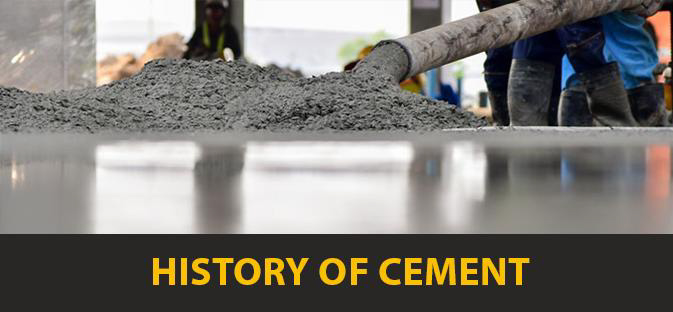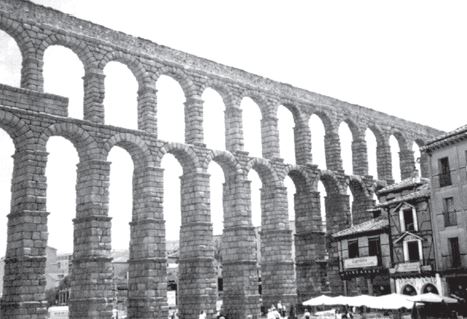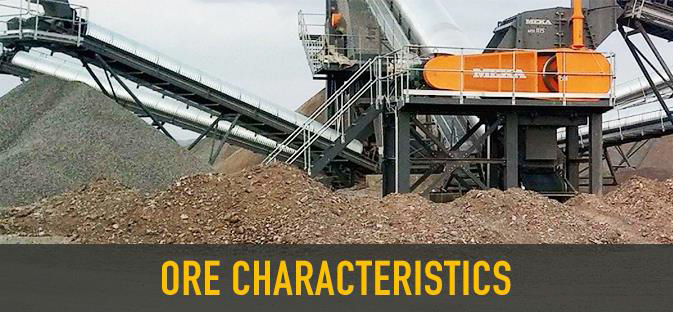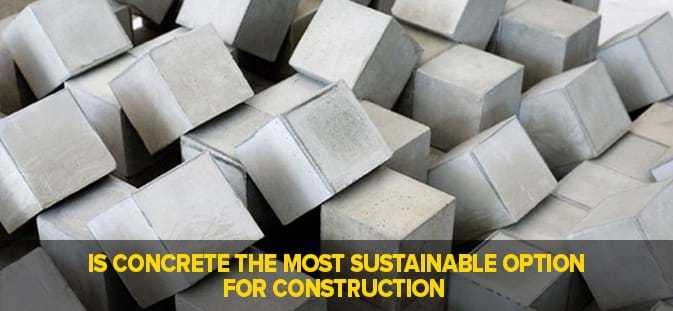History Of Cement

The word “cement” is derived from the Latin word “caementum”, which means chipped rock fragments.
Limestone is well known to be the oldest material to be used as a binder. Lime was produced by heating near pure limestone, and lime mortar was created by adding and mixing water and sand.
Concrete was first used in the Roman Empire. The concrete used in the construction of the “Castel Sant’Angelo” in Rome, constructed in 138 BC, has preserved its characteristics, while the stone has suffered from erosion.
Binders of different types were used for the Egyptian Pyramids, the Great Wall of China, and castles constructed in different periods by many different civilizations.

The ancient Greeks mixed volcanic tuff from the island of Santorini with lime to obtain mortar, or used a clayey limestone to produce a kind of hydraulic lime that was used for the production of mortar. In Egypt, impure calcinated gypsum was used rather than cement.
Almost 2000 years ago, the Greeks and Romans ground lime and “pozzolin” – a volcanic ash that is these days known as “pozzolana” – and used the mixture as mortar in masonry with the addition of sand.
Although various binders were used in ancient times, studies of ancient construction methods have been unable to garner much information on how these binders were obtained, or the working conditions. For example, Roman philosopher Gaius Plinius wrote, “... it is beyond understanding how lime burns when it comes in contact with water, after having previously been obtained by burning with fire”.
The use of cement in Roman architecture started with the Colosseum and the Roman Baths in 27 BC.
The Romans mixed ground volcanic ash with lime to produce cement, and after observing that cement can set underwater, cement started to be used in the construction of ports. This mixture would later be named “Pozzolanic Cement” after the village of Pozzuoli in Vesuvius, near Rome.

In England, volcanic ash was ground and used in the manufacture of bricks and roof tiles. Large Medieval cathedrals such as those of Chartres and Rheims in France, and those in Durham, Lincoln and Rochester in England, were constructed using what were advanced technologies at the time. The Romans were unaware of the technologies being used 1,000 years earlier.
Most probably, the Romans identified the characteristic features of volcanic ash, and used it in their buildings for various purposes. Marcus Vitruvius Pollio, a Roman architect and engineer who lived in 1 AD, detailed structures and related technologies from the past in his book “Ten Books of Architecture”, and recommended concrete for its ability to give “polish to the floor and to create a strong foundation”. The book also mentioned the use of mixed lime and crushed rock, pozzolan, for the reinforcement of buildings, which is also said to preserve its hardness underwater.
European societies lagged behind the Romans. Mortars were prepared especially using lime, and setting took a reasonably long period of time. The use of pozzolan for the preparation of mortar was rediscovered by the Europeans in the Middle Ages.

In 1756, John Smeaton, who was given the responsibility for the construction of Eddystone Lighthouse, studied the chemical features of lime, and reached significant conclusions on its binding qualities. Later, in the light of these studies, Joseph Parker produced a binder known as “Roman Cement”, for which raw material was obtained from the limestone around London, and the produced binder was used in the construction of canals and ports. The “English Cement” produced by James Frost in the same era was not as popular as Roman Cement.
The Renaissance ushered in a new era in which people were encouraged to think in different ways, and the doors of the industrial revolution were thrown wide-opened. The naval fleet of England, comprising ships for trade and exploitation, required new lighthouses in the 18th century, and this became a driving force for the cement industries.
Eddystone Cliff near the Port of Plymouth in England had long posed a threat to the constant flow of vessels entering and exiting the port. Using mortars that hardened underwater, with a view to providing convenience to sailors, the construction of the 37-m high Eddystone Lighthouse was completed between 1757 and 1759, built from a mixture of lime, water, clay and iron cinder. The lighthouse was fixed to iron rods embedded in holes in the sea floor and secured with lead.
In 1756, English engineer John Smeaton determined that the best cement was based on soft limestone with a certain amount of clay content. Almost 40 years later, James Parker produced cement in England using limestone with a high impurity ratio. The production of cement out of clay and limestone was initiated in France in 1813 by Louis Vicat, and in England in 1822 by James Frost.
The binder produced by Louis Vicat went on to be used in bridges and concrete canals. Vicat studied the feature of under-water setting of the hydraulic cement, the binders that were obtained by mixing the lime and the pozzolan, and the natural cement. He produced a synthetic binder by mixing silica, aluminum and lime at certain amounts. His studies, experiments shed a light on production of Portland Cement that is widely used today. Vicat used his hydraulic binder in one of the abutments of the Souillac Bridge, the construction of which was completed in 1822.
In 1824, Joseph Aspdin, a mason from Leeds, heated ground clay and limestone until the limestone calcified, and then ground the mixture once again, observing that the mixture set some time later after adding water. Aspdin named his creation “Portland Cement”, due to its resemblance to the rock extracted from quarries on the “Isle of Portland on the British Coast”, and its use became widespread in the construction of buildings in England.

The “Wakefield Arms” building, which is still standing next to Kirkgate Station in England, is known to have been constructed using the binder produced by Joseph Aspdin. A process involving the baking of raw materials at high temperatures was devised by Isaac Johnson in 1845.
In 1845, Isaac Johnson baked a mixture of lime and clay mixture at a temperature of 1400°–1500°C – as is still done today – to produce the first modern Portland Cement. Thus, the significance of heat in the production of cement was recognized. At high temperatures, clinkerization occurs, and more reactive and strong cement components are created.
The first half of the 19th century saw a considerable increase in demand for cement in America. In 1818, one year after the excavation for the Erie Canal was begun, engineer Canvass White found that the material being extracted from a quarry in Madison County developed natural hydraulic characteristics after undergoing a simple process. Cement produced using this material was used in the construction of Erie Canal.
In 1850, David O. Saylor, an American, produced natural cement after baking and grinding a cement rock he had identified, although it was determined that the strength of the natural cement produced in the United States and some other countries was lower than that of Portland Cement.
Although the production of cement increased by1850, it was not produced in the United States in any great quantities until the 1870s. The first export of cement from Europe to the United States was made in 1868, and by 1885, exports had reached 3 million barrels.
The first cement factory in the United States was opened in 1871 by David O. Saylor. Saylor produced John K. Shinnportland cement in Philadelphia in 1876, making use of different materials extracted from his own quarries.
Formations suitable for cement production were subsequently identified in Rosendale, New York, and in Indiana, Kentucky and Lehigh Valley, Pennsylvania. In 1874, Robert W. Lesley claimed that workmanship costs would drop if the material was fed to the furnaces in chunks.
In 1880, 42 million barrels of cement were produced in the United States, and cement production reached 335 million barrels in the decade that followed. The most significant factor driving the increase in production was the developments seen in rotary furnaces. Earlier vertical furnaces had to be filled and emptied after each production phase, but were replaced by rotary furnaces, which enabled continuous production.
The rotary furnaces came to replace the original vertical shaft furnaces that were used for the production of lime in the 1890s. In rotary furnaces, heat transfer and heat treatment were achieved under better conditions, and so higher temperature values were attained.
In 1885, Frederick Ransome, an English engineer, obtained a patent for a less inclined rotary furnace. In inclined rotary furnaces, as the material in the furnace moves toward the outlet due to the motion of the furnace, production capacity is increased and more homogenous products are obtained. Vertical furnaces were subsequently replaced by new inclined rotary furnaces.
At the end of the 19th century, plaster stone was added to the clinker, and ball mills were used for grinding.
In 1902 Thomas A. Edison installed the longest furnace (45 m) built to date in the New Jersey Portland Cement Works. Together with the usage of longer furnaces, and taking advantage of the developments in crushing and grinding mills, the capacities of cement facilities have been increased.
The first broad engineering application of Portland Cement was seen in the tunnel bored under the River Thames in 1928, for which a facility was opened in Wakefield for the production of cement.
In short, the name “Portland” comes from a construction rock sourced from Portland, and that has similar qualities to Portland cement (Taylor, 1992). Although the date Portland cement was invented is not known, its patent was obtained by J. Aspdin in 1824. Although the optimum heat treatment applied in the production of Portland Cement produced today ensure superior features to the cement produced by J. Aspdin, he should be recognized in literature as the person who invented cement.
In 1845, Isaac Johnson used the same raw materials in his cement as the Portland Cement used today.
In England in 1825, James Frost initiated constant production of Portland Cement in Swanscombe, while the first cement factories to be constructed in Belgium and Germany opened in 1855. The first studies of cement in the United States began in 1865, and Portland Cement production was launched in 1871. Regular investigations into the composition of Portland cement were launched, and in 1906 heat treatment and production methods were applied based on scientific foundations. The first cement trucks were used in Baltimore, Maryland in 1913.
Since 1926, many scientific studies have been conducted into Portland Cement in various countries, and the development of hydraulic cement has been maintained.
In the 1900s, the use of rotary furnaces for heat treatment; the use of ball mills for grinding the raw materials and clinker; and the addition of plaster stone and the other additives to clinker led to improvements in cement quality, and significant developments have been witnessed in production processes over time. As a result, the following systems have been adopted by the cement sector:
- Lepol system by Polysius in 1928,
- Vertical roll furnace in 1930,
- Pre-furnace pre-heating cyclones in 1932,
- Fuller grill cooler in 1937
- Mechanical classifiers in 1950,
- The first furnace side-passing system in 1960,
- The pre-calcification system in 1966,
- High-productive classifiers in 1970,
- Calcination systems using tertiary air coming from the cooler in 1973.




